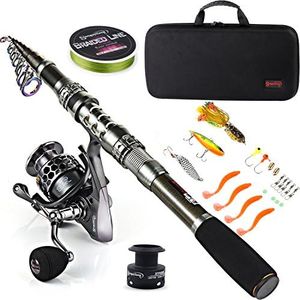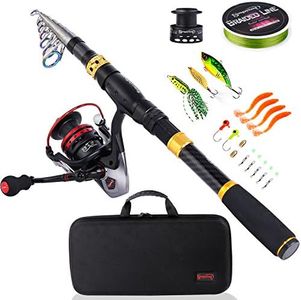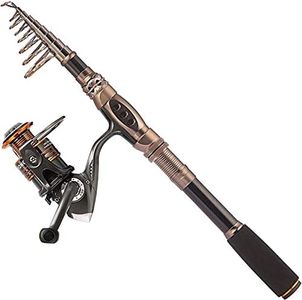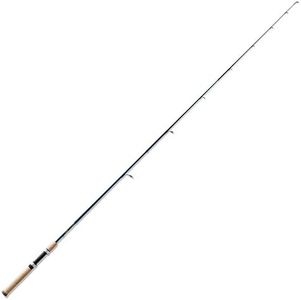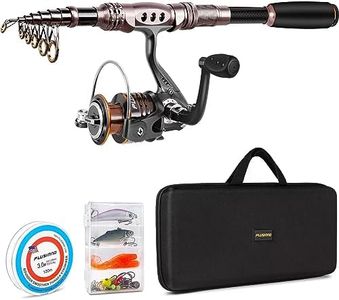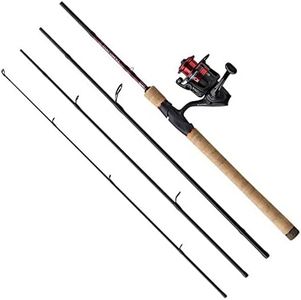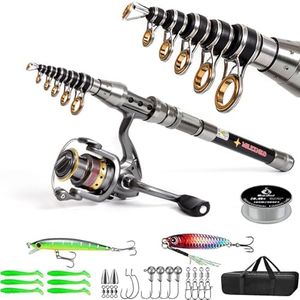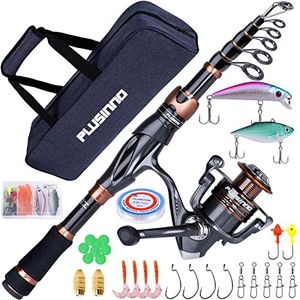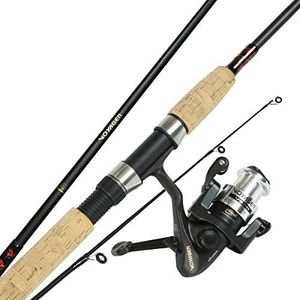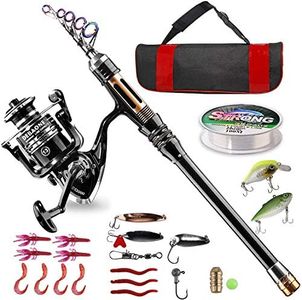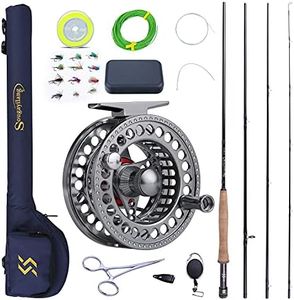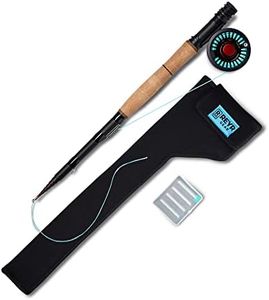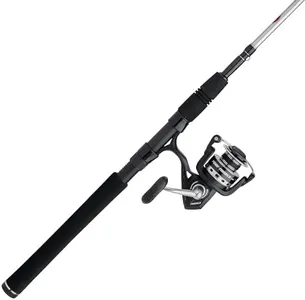We Use CookiesWe use cookies to enhance the security, performance,
functionality and for analytical and promotional activities. By continuing to browse this site you
are agreeing to our privacy policy
10 Best Portable Backpacking Fishing Rods
From leading brands and best sellers available on the web.Buying Guide for the Best Portable Backpacking Fishing Rods
Choosing a portable backpacking fishing rod is all about finding the right balance between portability, durability, and suitability for your fishing style and destination. Since you'll be carrying the rod in your pack while hiking, it’s important to consider both the ease of transport and how well the rod will perform once you reach the water. Understanding the key specifications will help you make a choice that suits your adventures and fishing preferences.Rod LengthRod length refers to how long the fishing rod is when it is fully extended. This is important because it affects casting distance, accuracy, and the type of water you can fish in. Backpacking rods typically range from about 5 feet to 8 feet when assembled. Shorter rods (5-6 feet) are better for tight spaces or small streams, as they are easier to maneuver among trees and overgrown banks. Longer rods (7-8 feet) give you more casting distance and control when fishing in open areas or larger bodies of water. Think about the typical environments you’ll fish in and choose a length that fits those needs.
Collapsed/Transport SizeCollapsed or transport size is how short the rod becomes when packed down for carrying. This is crucial for backpackers who need their rod to fit easily inside or on the outside of a backpack. Options include multi-piece rods (which break into two or more sections) and telescopic rods (which collapse into themselves). The smaller the collapsed size, the easier it is to pack, but more sections can sometimes mean more set-up time. If you often hike long distances or want maximum portability, opt for rods with the smallest packed size that still meet your fishing needs.
Rod WeightRod weight is how heavy the fishing rod is. For backpacking, a lighter rod is generally better because it won't weigh down your pack. However, very lightweight rods might sacrifice a bit of durability or strength. Most portable rods are designed to be light, but be sure to check this spec if you’re particularly concerned about carrying comfort. Pick a rod weight that feels manageable based on the rest of your gear and how much walking or hiking you’ll be doing.
MaterialMaterials used in fishing rods are often fiberglass, graphite, or a composite of both. Fiberglass rods are usually tougher and more flexible but a little heavier, making them good for beginners or rugged use. Graphite rods are lighter and more sensitive, which can help you feel bites better, but they can be more fragile. Think about whether you prioritize sensitivity or resilience and choose the material that matches your fishing style and expected conditions.
Rod Action and PowerAction describes how much the rod bends when pressure is applied, and power refers to the amount of force it takes to bend the rod. Fast action rods bend mostly at the tip, offering quick hook sets and good control, which is useful for targeting specific fish. Slow action rods bend throughout the length, making them more forgiving and fun for smaller fish. Light to medium power rods are best for small to medium-sized fish commonly found in mountain streams and lakes. Consider what kinds of fish you plan to catch and select an action and power that match those expectations.
Reel Compatibility and Rod TypeSome portable rods are designed for spinning reels, while others are for baitcasting reels or fly fishing. Spinning setups are generally more versatile and beginner-friendly, making them a popular choice for backpacking. Make sure the rod you choose matches the type of reel and fishing style you prefer. Fly fishing rods are a separate type and need fly reels, so be certain of the fishing method you intend to use before making your selection.
Durability and Construction QualitySince backpacking can subject your gear to bumps, drops, and rough conditions, construction quality matters a lot. Pay attention to how the sections fit together, how strong the guides (the rings the line passes through) are, and if the handle feels sturdy. A rod that is well-built will save you headaches on remote trips and ensure it lasts over time.
